Honor Award
Design Teach
Jesse Nicholson, Student ASLA; Travis North, Student ASLA; Roana Tirado, Student ASLA Graduate Cornell University
Faculty Advisors: Paula Horrigan, ASLA; Daniel Krall, ASLA; Marc Miller and Peter Trowbridge, FLSA
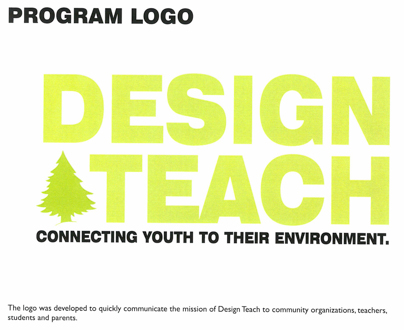 Close Me!
Close Me!The logo was developed to quickly communicate the mission of Design Teach to community organizations, teachers, students and parents.
Download Hi-Res ImageImage: Student Team
Image 1 of 13
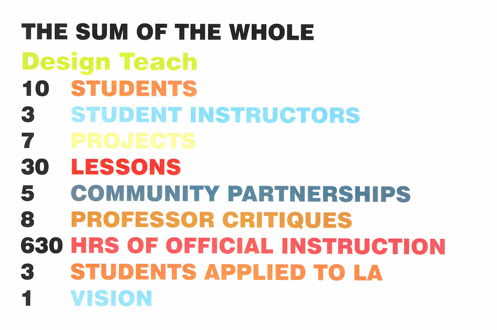
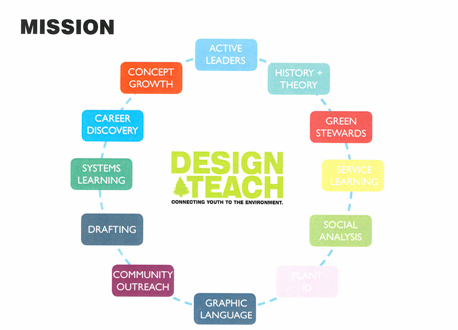
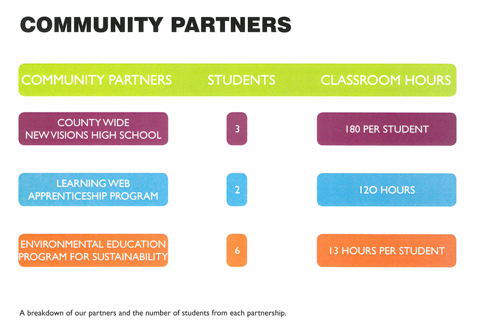 Close Me!
Close Me!A breakdown of our partners and the number of students from each partnership.
Download Hi-Res ImageImage: Student Team
Image 4 of 13
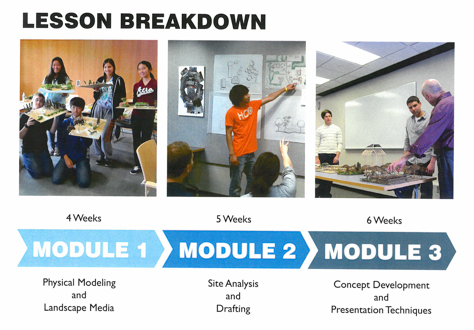
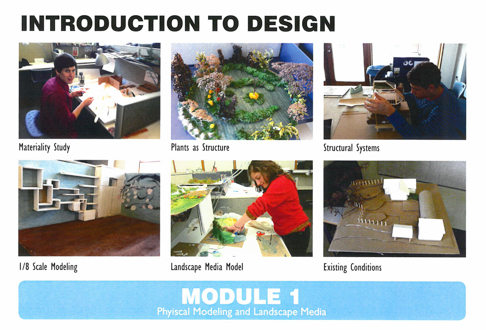 Close Me!
Close Me!The first month, students build models that explore topography, structures, planting design, and landscape experience. We found that modeling allows students to easily grasp design concepts while experimenting with materiality and construction.
Download Hi-Res ImageImage: Student Team
Image 6 of 13
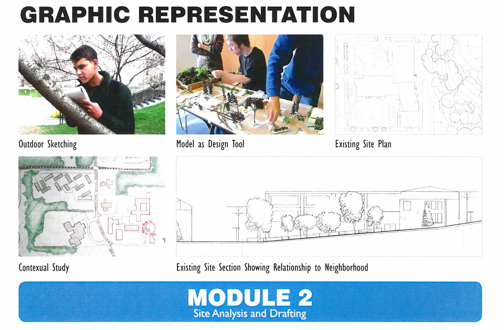 Close Me!
Close Me!In the module 2, students begin to explore their sites and experiment with different mediums of graphic representation, such as sketching, collaging, and drafting.
Download Hi-Res ImageImage: Student Team
Image 7 of 13
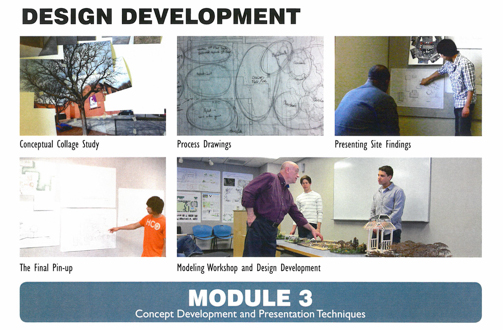 Close Me!
Close Me!In module 3, students begin to develop and test concepts, presenting their design ideas to professors and landscape architecture students.
Download Hi-Res ImageImage: Student Team
Image 8 of 13
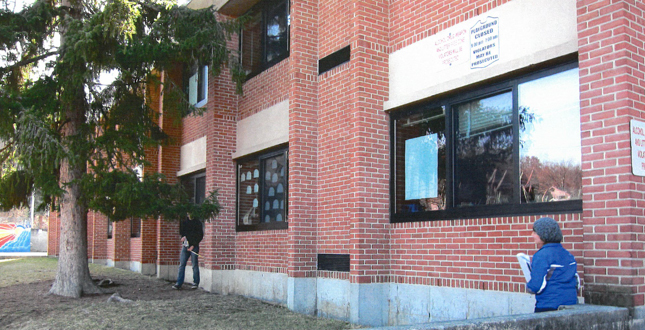 Close Me!
Close Me!Students are given real sites. In this case, a local elementary school. Here the students learn to take field measurements and conduct site inventory.
Download Hi-Res ImageImage: Student Team
Image 9 of 13
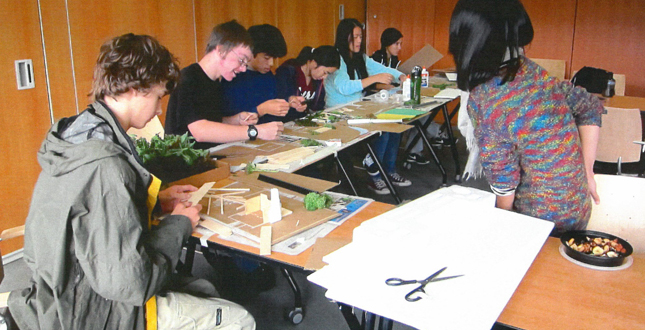 Close Me!
Close Me!For students that are with us for a short time—like the local arboretum’s backyard sustainability program shown here—we prefer hands-on lessons, such as model building, collaging, and walking tours that teach students to read the landscape.
Download Hi-Res ImageImage: Student Team
Image 10 of 13
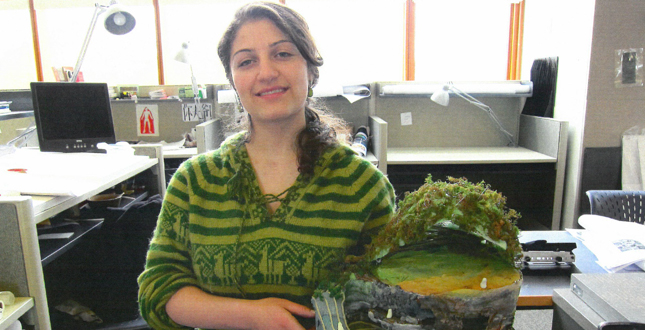 Close Me!
Close Me!For the fourth model, students must combine the lessons from the three previous models—topography, structures, and plantings—to capture the experience of their favorite place. Here a student displays her final model: a sustainable dance hall.
Download Hi-Res ImageImage: Student Team
Image 11 of 13
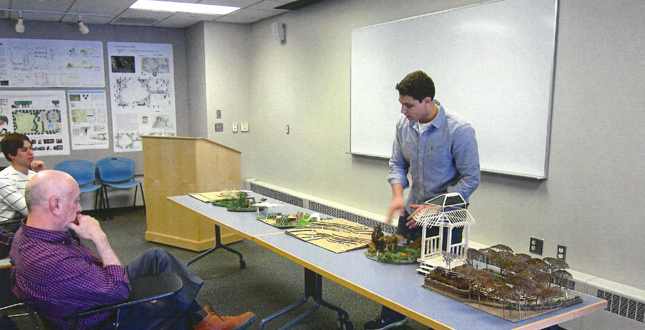 Close Me!
Close Me!Students present there models to professors, gaining valuable feedback in their designs while learning how to clearly articulate their ideas and concepts.
Download Hi-Res ImageImage: Student Team
Image 12 of 13
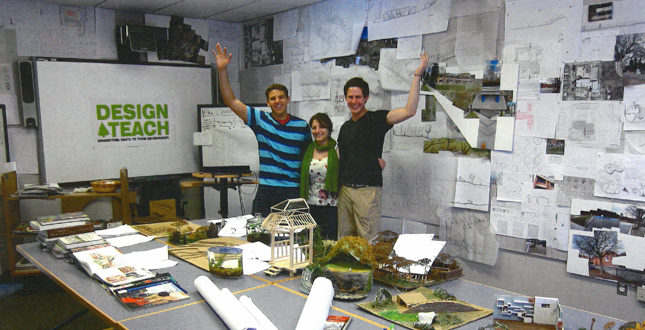 Close Me!
Close Me!The students celebrate their work after a semester with Design Teach.
Download Hi-Res ImageImage: Student Team
Image 13 of 13
Project Statement
Design Teach is a youth outreach program that introduces 8th-12th grade students to the concepts and skills of landscape architecture. We partner with local schools, teachers, non-profits and community leaders to design workshops and classroom curricula that connect students to the environment and the broader community. Since its inception two years ago, Design Teach has since provided roughly 630 hours of hands-on instruction to local students.
Project Narrative
Beginnings
Design Teach was founded in 2011 by three graduate students who were concerned about the lack of awareness and engagement among youth with the landscape architecture profession. Initially conceived as a program that would travel to local high schools and teach classes on landscape architecture, we quickly realized very few schools could afford the space or time to operate such a program. Redoubling our efforts, we decided to advertise Design Teach as a flexible program that would work with instructors or individual students to design curricula that meets their needs. We also worked to explain landscape architecture in simple, clear terms that relates to teachers and students. We have since partnered with four community organizations and will be partnering with a fifth organization over the summer.
Philosophical Underpinnings
Design Teach began as a way to reach youth who otherwise would have little exposure to landscape architecture. The program empowers youth to take active leadership roles in their community, equipping them with a unique skill set that they can use in multiple facets of life. We place a strong emphasis on the integration of environmental and social systems, challenging students to work at multiple scales and consider the role of ecological, social and aesthetic factors in shaping our communities. For example, our lessons emphasize social factors such as race and equality as well as sustainability and ecosystem services.
Partnering Organizations
In the fall of 2011, we partnered with our first organization: a county-wide high school program that embeds seniors in a college department for twelve hours a week. The program had one student who was interested in engineering. After an initial meeting regarding landscape architecture, the student decided Design Teach was a better fit. Over the course of the spring semester, we provided individual instruction for fifteen hours a week for fifteen weeks. We arranged for the student to have a desk in studio, allowing him the invaluable experience of conversing with undergraduate and graduate students in a studio atmosphere. We have since gained two more students from the program.
In the summer of 2012, we partnered with a second organization: the local arboretum. The organization had developed a pilot program that teaches high school students about sustainable backyard landscapes. As guest lecturers, we developed and taught four Saturday workshops: 1) thinking like a designer, 2) the importance of plants, 3) structures in the landscape, and 4) a backyard sustainability assessment The pilot program was well received and next fall we will be adding on to the series with four additional lessons on design for pollinators.
In the fall of 2013, we partnered with a third organization: Learning Web, an organization that connects youth to mentorships for career explorations and skill building. Because the mentorship was in addition to the student's high school duties, we designed a less-intensive program that provides training in landscape architecture without over-burdening the student She is graduating this year and has been accepted into a Landscape Architecture program for college. Her success encouraged the Learning Web to place another student with us for the summer.
In the spring of 2013, we partnered with a fourth organization: a local elementary school. The partnership allows us to use the school grounds for our design studio. We will present our work to the school at the end of the year and our hope is that it will blossom into a larger partnership with teachers from the school.
This summer we will be partnering with a fifth organization: the local youth bureau. This latest partnership began through a conversation with a community member. After an initial meeting with her son-a high school junior with a keen interest in design but struggling in high school-we decided he would benefit from the structural support the Learning Web provides students. In conjunction with the Learning Web, we procured fund ing for him through the youth bureau that pays him an hourly rate to attend the Design Teach program rather than work a typical summer job.
Methods
For the students who are with us for an extended period of time, we develop a studio project that covers on-site analysis, concept development, design, and finally concludes with an end-of-semester presentation to a panel of landscape architecture students and professors. In the process, they learn how to sketch, photo collage, draft, select plants, model, conduct site analysis and site design, and present their ideas. We also have the students do weekly readings that explore landscape architecture history, theory, practice, ecology, and community development Additionally, we allow students to attend class lectures, guest lectures, and critiques.
Results
Three of four students who have taken a full semester of Design Teach have gone on to apply for landscape architecture programs. Additionally, exit surveys from the mini-lessons taught at the arboretum suggest students' interest in landscape architecture raises an average of 5 points (scale of 1-10). Anecdotally, we have seen increased interests in the program from community organizations, parents, students, and school officials.
Unforeseen and Immeasurable Findings
There are some things that cannot be quantified. We did not anticipate the reciprocal relationship formed with our students and how much we as instructors would learn from them. The simple act of having to develop lesson plans, select readings, and articulate theories to our students forced us to question and deepen our knowledge.
We also learned valuable lessons about how to move from idealism to practical application. Despite the fact that engaging a diverse student body was an original goal of ours, we found it much more difficult to achieve and more complex of an issue than we first realized. Even just being two white males-as we originally were hindered our ability to achieve this goal when trying to recruit students. Nor did we anticipate that the absence of reduced lunches at our university would affect the students who were able to attend our program. We have no easy answers for these issues, but we are actively working to address them. we have learned that partnering with diverse community organizations helps to ensure a more diverse student body.
Design Teach has grown beyond its original mission. It is no longer just about introducing kids to landscape architecture. It's about mentoring kids through design and providing access to a collegiate environment It's about developing an integrated network of community organizations. It's about leveraging the skills of college students to not only engage the community but also teach its youth to be thoughtful and active leaders.




